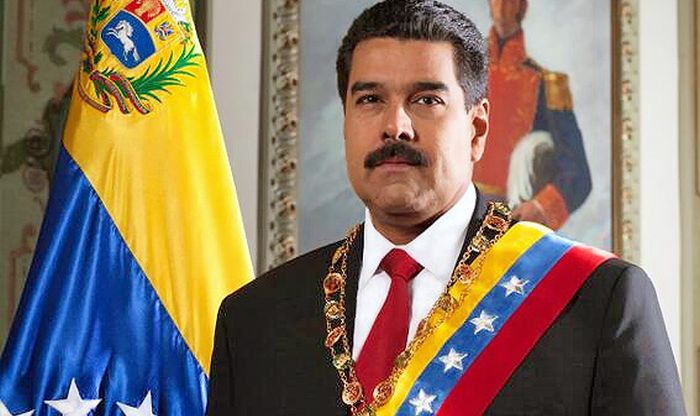The End of Fragmentation: Towards a Coherent Ethereum
Author: Prince
Compiled by: Block unicorn
Ethereum's initial vision was a permissionless, infinitely open platform where anyone with an idea could participate. Its principle is simple: a world computer sharing a single global state view. Ethereum's value lies in the fact that anyone can build useful applications, and that all applications are interconnected.
As Ethereum evolves, its scaling roadmap brings both new opportunities and challenges. New closed ecosystems are beginning to emerge.
Entrepreneurs seek higher performance or practical ways to make their products stand out. For some developers, the simplest way to achieve this is to create their own blockchain ecosystem. This ecosystem expands in almost every possible direction: new blockchains are launched (horizontal growth), and aggregations are introduced to expand the underlying layers (vertical growth). Other teams choose to build their own dedicated execution and consensus layers (application-specific blockchains) to meet the needs of their projects.
Each expansion, viewed individually, is a reasonable decision. But from a broader perspective, this continuous expansion is beginning to undermine the belief that Ethereum will one day become the "world computer." Today, the same assets exist on multiple platforms and in multiple forms. The same exchanges or lending markets appear on every chain.
The permissionless nature remains, but the coordination mechanisms are beginning to disappear. As state, assets, liquidity, and applications become increasingly fragmented, what was once an infinite garden is starting to resemble a complex maze.
The real cost of fragmentation
Fragmentation has not only created technical obstacles, but it has also changed how developers feel when choosing to build applications.
The products delivered by each team initially functioned as expected. However, with increasing fragmentation, these teams were forced to migrate identical applications to other chains in order to retain existing users. Each new deployment seemed like progress, but for most developers, it felt like starting from scratch. Liquidity gradually eroded, and users left with it.
Ethereum continues to grow and thrive, but it has gradually lost its community cohesion. Although the ecosystem remains active and continues to grow, individual interests have begun to take precedence over coordination and connection. This boundless garden is beginning to show signs of overgrowth and neglect.
No one did anything wrong. Everyone followed the incentive mechanism. Over time, all that remained was exhaustion. Abundance was brought without permission, yet within this abundance, the very foundation that once held everything together began to crumble.
Return of coherence
MegaETH represents Ethereum's first real opportunity to scale block space supply to meet demand within a single execution environment. Currently, the L2 block space market is congested. Most projects are vying for the same user base, offering largely similar block space. Throughput bottlenecks persist, and high activity on individual sequencers artificially inflates transaction costs. Despite significant technological advancements, only a handful of scaling solutions have truly improved the user and developer experience.
MegaETH aims to change that. It is one of the closest attempts to realizing Ethereum's original vision—building a world computer. By providing an execution environment with latency below 10 milliseconds, gigabit gas caps, and ultra-low-cost transactions, the MegaETH team is striving to achieve the vision of a world computer. All data is processed on a single shared state (ignoring privacy concerns for now), and real-time execution should be a guiding light for our industry and the only way we can truly compete with Web 2.0.
As a founder building on MegaETH, what impressed me most wasn't the speed or millisecond-level latency, but rather that after many years, all applications built on Ethereum can finally connect and stay in sync, and at a low cost with short wait times. When all contracts and transactions reside in the same state machine, complex coordination mechanisms become simple again. Developers no longer need to struggle with latency or spend time optimizing contracts to improve gas efficiency; users no longer need to worry about which "version" of network they are transacting on.
This is what MegaETH means by "Big Sequencer Energy": Ethereum possesses a high-performance execution layer built specifically for real-time applications. For the first time in years, users can build applications within the Ethereum execution environment without worrying about their location. All users can once again share the same execution environment, enabling latency-sensitive applications such as high-frequency trading, on-chain order books, real-time lending, and fully on-chain multiplayer games—features currently impossible due to Ethereum's resource limitations.
Enter: MegaMafia
In the context of MegaETH, those who experienced fragmentation are beginning to rebuild. We all know what we lost when everything fell apart. Now, the system is finally able to stay in sync, and it feels like moving forward rather than sideways.
Each team works on a different level: transactions, credit, infrastructure, gaming, and more. But their goal is the same: to make Ethereum a unified whole again. MegaETH provides that opportunity, and MegaMafia has given it shape.
The focus now is no longer on deploying more of the same applications, but on rebuilding the infrastructure so that the parts that are already working well can finally work together.
Avon's role in world computing
Avon brought the same concept to the credit market.
Of all DeFi categories, lending is most severely affected by fragmentation. Each protocol operates on different versions of the same concept. Each market has its own liquidity, rules, and risks.
Anyone who's used these markets knows the feeling. You check interest rates on one app, then compare them on another, and still don't know which is more reliable. Liquidity stagnates because it can't flow between different protocols.
Avon introduces a coordination layer instead of deploying another pool of funds. Its order book connects different strategies (independent markets), enabling them to respond to each other in real time. You can think of it as many pools of funds connected through a shared layer (i.e., the order book). When one changes, the others are aware of it. Over time, the lending market will once again function as a single, interconnected market. Liquidity will flow to where the most competitive conditions are available. Borrowers will obtain the most competitive interest rates possible.
Coordination is not just about optimizing interest rates or controlling them. More importantly, it's about providing a unified perspective on lending during market fluctuations.
Towards a coherent Ethereum
Ethereum doesn't need another chain. It needs a central hub where people gather and maintain Ethereum.
MegaETH provides the trading venue. MegaMafia will provide the trading power. Avon will provide the coordination layer, enabling funds to flow within the system.
Ethereum has faced fragmentation issues for the past few years; we believe MegaETH will drive Ethereum toward realizing its vision of becoming a world computer and reaching an unprecedented scale.
As Ethereum begins to regain its rhythm, MegaETH will ensure that builders can do this at a near-infinite scale.
You May Also Like

Venezuela Plans To Add Bitcoin And Stablecoins To The National Banking System

10 Top Cryptos for Long-Term Investors Seeking Passive Income and High ROI

Revolut Launches 1:1 Stablecoin Conversions with Zero Fees for 65 Million Global Users
Highlights: Revolut now offers zero-fee USD to stablecoin conversions for its users across six major blockchains. The fintech reported a huge profit, driven by rising crypto trading and platform expansion in Europe. Stablecoin conversions strengthen Revolut’s global reach as it prepares for US entry and possible dual market listing. Revolut has added a new feature that lets users change USD into stablecoins and vice versa at a 1:1 rate. The digital bank got rid of all conversion fees and spreads, so users can now exchange up to $578,630 every 30 days without paying any extra fees. The feature works with both USDC and USDT on six major blockchains, such as Ethereum, Solana, and Tron. Revolut has just made a major crypto move! Users can now swap USD to $USDC or $USDT 1:1 with zero fees or spreads — available across six blockchains. A huge step toward mainstream stablecoin adoption. Could this set a new standard for fintechs? #Revolut #Fintech… pic.twitter.com/qZqbx2tQHg — CryptoMoses (@realcryptomoses) October 31, 2025 Leonid Bashlykov, Revolut’s Head of Product for Crypto, said the goal is to remove friction between fiat and digital assets. He explained that customers will now receive exactly $1 in stablecoins for every $1 exchanged. Bashlykov shared the update on LinkedIn, describing it as a way to simplify how people move between cash and crypto. Revolut reported that the spread will be covered internally as long as both stablecoins maintain their pegs. The rollout follows Revolut’s recent approval under the Markets in Crypto-Assets Regulation framework. The company received a license from the Cyprus Securities and Exchange Commission, enabling it to offer regulated crypto services across 30 European Economic Area countries. Bashlykov added that the 1:1 rate is not about gaining a better deal but about eliminating the anxiety of moving on and off blockchain systems. Expanding Crypto Services and Rising Revenue Across Europe Revolut has been expanding in Europe. Meanwhile, the fintech company reported £1.1 billion in profit last year, a 149% increase from the previous year. The company achieved £3.1 billion in total revenue, primarily due to strong growth in crypto trading, subscriptions, and lending. The company’s wealth division, which includes trading services, crypto, and commodities, made £506 million in sales. Revolut launched Revolut X, a professional trading platform for advanced traders. The platform offers trading in more than 100 tokens with 0% maker fees and 0.09% taker fees. It now operates in 30 European countries and integrates TradingView charts and analytics. Revolut partnered with Consensys in March to launch Revolut Ramp, which lets people buy crypto directly through MetaMask wallets. Later in the year, it partnered with Ledger to let people buy crypto through Ledger Live. The company has $35 billion in customer assets, and it serves more than 65 million people worldwide. Its Crypto Learn feature, which teaches people about cryptocurrencies, keeps bringing in new investors who want easier ways to understand the market. Global Strategy and Growing Role in Stablecoin Conversions Revolut’s focus on stablecoin conversions fits with its greater plan for expansion. The business intends to invest more than €1 billion into France by 2028 and set up its Western European headquarters in Paris. It is also trying to get into the U.S. by acquiring a nationally chartered bank, which would speed up the process of getting a license. Reports indicate that Revolut could secure $1 billion in new funding, which would make the company worth about $65 billion. The firm is reportedly exploring a dual listing in London and New York, which could make it one of the top 15 firms on the London Stock Exchange. Revolut is exploring a dual listing in London and New York, targeting a $75B valuation, per The Sunday Times. If it happens, it'd be the first to enter FTSE 100 while listing in NY. Serves 65M users, including 12M in UK. #Fintech #IPO — Vincent Bu Lu (@VincentBuLu1) September 29, 2025 Revolut’s latest update arrives as other major payment firms move toward blockchain settlements. Western Union plans to roll out a stablecoin-based system by 2026, while Zelle and MoneyGram are developing similar products to improve cross-border transfers. eToro Platform Best Crypto Exchange Over 90 top cryptos to trade Regulated by top-tier entities User-friendly trading app 30+ million users 9.9 Visit eToro eToro is a multi-asset investment platform. The value of your investments may go up or down. Your capital is at risk. Don’t invest unless you’re prepared to lose all the money you invest. This is a high-risk investment, and you should not expect to be protected if something goes wrong.